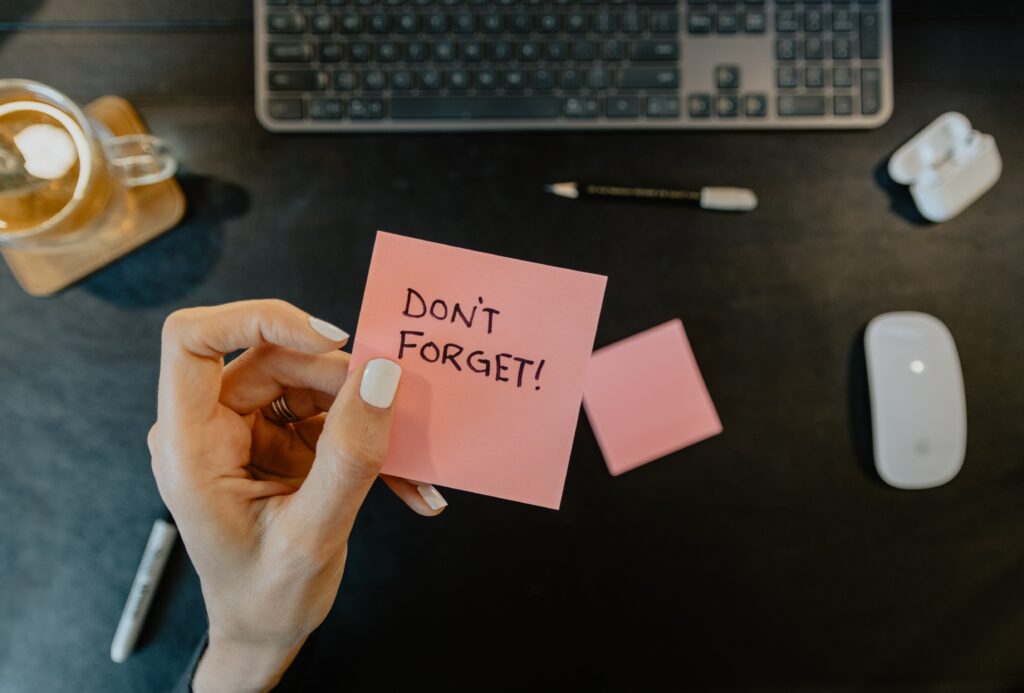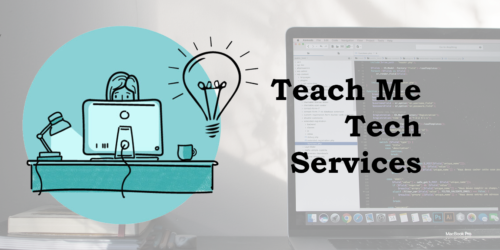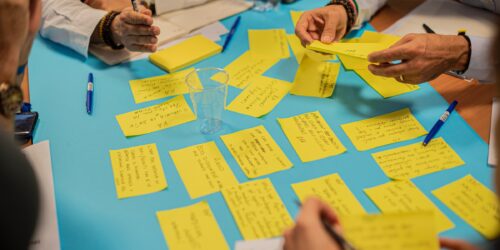
Want to Improve Learning? It’s Easy as Repeat, Repeat, Repeat
We all want our students to remember what we teach them. This is a reasonable expectation considering all that time you spent preparing lessons, activities and assessments. But sometimes you might find that your efforts did not align with your expectations from those assessments. Remember the results from that test you gave? Maybe the results left you feeling frustrated and confused. “How could they not have remembered it? We spent a whole class on it!”
In this post we turn to the research on what it means to learn, how forgetting happens and teaching actions you can use to improve learning and retention of those important concepts and skills from your courses. Best of all, these actions require only modest efforts on your part that can be naturally embedded in any lesson.
What Do We Mean By ‘Learning’?
What do you think it means to learn? It is a word we use often in education but sometimes without a clear understanding of what it means.
For this post we use a broad definition that memory researchers share about what it means to learn (OpenStaxCollege, 2014):
Learning is any relative permanent change in behavior that occurs because of practice or experience.
This is a simple but effective definition. It tells us that for something to be learned there must be some form of engagement surrounding a practice or experience that results in an ability to recall that practice or experience – with minimal effort – weeks or perhaps months later. For example, we might observe and evaluate a permanent change when students consistently demonstrate a culinary task they have practiced, correctly replace brakes pads on a car, or effectively draw blood from a patient, all without expert guidance. As a result, we can be confident that learning has taken place according to the definition above, until the inevitable happens: they begin to forget.
Why We Forget
Forgetting is a perfectly normal part of memory. In fact, the act of forgetting follows a well-known curve called the ‘forgetting curve’. Known for over a century, the forgetting curve is a graphical representation surrounding the change in retention of what was learned as time progresses. Figure 1 shows a general example of what the forgetting curve generally looks like.
Figure 1. The forgetting curve. (Icez, 2022)
Fighting the forgetting curve is a constant battle for all of us. Fortunately, interventions to minimize the impact of forgetting is also well-researched. Most of these interventions have one thing in common: they promote recall. Brain science tells us that the act of recalling a practice or experience causes neurons in our brain to connect or ‘link’ together. These neural links then form what we call a ‘memory’. The more recall opportunities that we experience, the stronger these links become. Strong links make forgetting much harder to happen, perhaps even impossible. Neuropsychologist Carla Shatz said it best about remembering: “[Neurons] that fire together wire together” (Shatz, 1992). Therefore, repeated opportunities for neurons to fire together is why you have an easier time tying your shoelaces or riding a bicycle compared to remembering a student’s name after the first introduction.
Combatting the Forgetting Curve
Figure 2 indicates how the forgetting curve can be flattened or leveled off by the act of repeated recall. By creating opportunities to review – whether created by you during classroom instruction or by students reviewing after class – you increase the likelihood that students will remember the material you believe to be important long after the class is completed.
Figure 2: Combatting the forgetting curve. Re-printed with permission. Chun, B. A., & Heo, H. J. (2018, January).
Before we review how to overcome the forgetting curve, be aware that students come to your courses with their gifts and challenges. This means that ‘flattening the curve’ may vary from person to person depending on the learning environment you create as well as the cognitive diversity among your students. For example, some students may require more review opportunities than others due to working memory differences and neural processing speeds. Just be prepared that you may need to provide multiple opportunities for review if you are to support for equitable outcomes in your courses.
Overcoming the Forgetting Curve
It is surprisingly easy to help students to combat their own forgetting curves. All it requires is modest efforts on your part during each lesson to provide opportunities for knowledge recall and application. What follows is a series of actions that will help to flatten the curve during your teaching practice. While you read these actions, reflect on what practices and experiences you think are important for your students to remember as they move into the workforce upon graduation. Consider the following:
Re-Enforce, Often
- Part way through a lesson or at the end, promote recall of what has been taught by having students complete a ‘brain dump’. Give a minute or two for students to write out key knowledge or perhaps turn to a partner to express concepts from your lesson up to that point.
- Give a short no-stakes (not for points) quiz during or after the lesson. Mentimeter is a quizzing tool that you can integrate into your PowerPoint lessons to reinforce learning.
- At the beginning of the next lesson, have students write down – or discuss with a partner – what they recall from the last lesson or present a no-stakes quiz to promote recall.
Keep Engagement High
- Use questioning techniques learned from the Teaching and Learning workshops (such as EDV0390) that promote student engagement and recall.
- Be consistent in using a combination of written and verbal recall strategies that include opportunities to share their recall with a partner.
Keep it ‘Spaced’
- Research has demonstrated that repeated recall of important concepts spaced over several days or even weeks helps make learning more permanent compared to repeated recall over a few hours (Oakley, B., & Sejnowski, T. J., 2021).
- Regarding the number of recalls: two recalls is better than one. Three recalls seem to be the point where permanent learning begins to occur. So, plan for three recalls on those important concepts.
Keep it Relevant
- By making the learning authentic and practical you will heighten engagement and intrinsic motivation resulting in enhanced remembering. In short, the more interesting your lesson the more likely it will be remembered (Agarwal, P. K., & Bain, P. M. (2019)
- Give practical, real-world examples wherever possible that highlight how it might impact student lives. Sharing stories from the workplace is a great place to start. Everyone remembers a good story!
Keep it Clear
- Following an organized plan for lesson design using BOPPPS will help keep the lesson flow clear, logical, and outcome centred. This will make it easier to remember.
- Use multiple means of representing knowledge such as videos, graphical organizers, and simulations that make the learning dynamic and accessible.
Conclusion
Educational psychologist Barbara Oakley said it best about how to improve learning, “Teaching is ultimately about what we get out of students heads, not what we try to put in it”. So, the key to good teaching is not just about the planning and delivery. It is also about the opportunities provided to your students for recall and practice of those important concepts and ideas from your lessons. If you are wondering where to start, begin with a simple strategy such as the brain dump outlined above. It is quick, easy to implement, and very effective. Then slowly build in other forms of recall strategies that will further help in making your important work ‘stick’ long after students have left your course.
References
Agarwal, P. K., & Bain, P. M. (2019). Powerful teaching: Unleash the science of learning. John Wiley & Sons.
Chun, B.A., Heo, J.H. (2018). The effect of flipped learning on academic performance as an innovative method for overcoming ebbinghaus’ forgetting curve. In Proceedings of the 6th International Conference on Information and Education Technology (ICIET ’18). Association for Computing Machinery, New York, NY, USA, 56–60. https://doi.org/10.1145/3178158.3178206
Dunlosky, J., Rawson, K. A., Marsh, E. J., Nathan, M. J., & Willingham, D. T. (2013). What works, what doesn’t. scientific american mind, 24(4), 46-53.
Icez (2022). A representation of the forgetting curve, with retained memory halving each day. Retrieved January 9th, 2024, https://commons.wikimedia.org/wiki/File:Forgetting_curve_decline.svg
Oakley, B., & Sejnowski, T. J. (2021). Uncommon sense teaching: Practical insights in brain science to help students learn. Penguin.
OpenStaxCollege (2014). Psychology. OSCRiceUniversity.
Shatz CJ. 1992. The developing brain. Sci. Am. 267, 60–67.
Sikkema, k. (n.d.) [a person holding a note that says don’t forget]. Retrieved January 14th, 2024, from https://unsplash.com/photos/a-person-holding-a-note-that-says-dont-forget-mZ5D2T5rVG4








